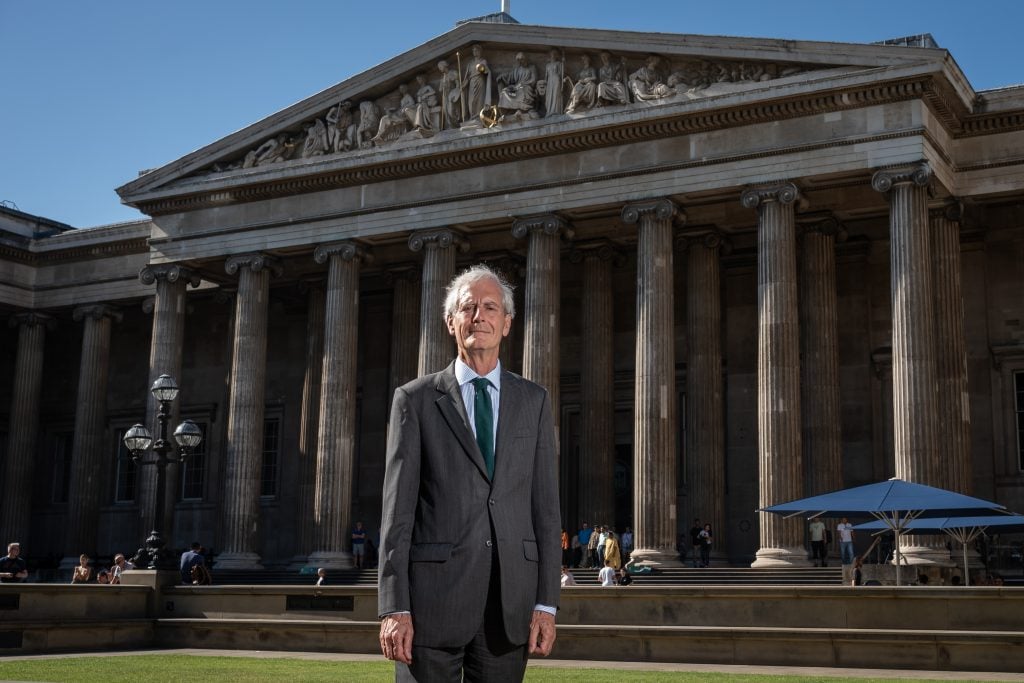The U.K. has long boasted free museums for all, offering an unparalleled degree of access to its cultural assets compared to major institutions in Europe and the U.S. Ahead of the general election on July 4, however, some argue that it is high time this public benefit came to an end in order to address the funding crisis many institutions are facing. That is, at least, for the near 40 million foreign visitors who come to the U.K. each year.
This is the proposal of Sir Mark Jones, who until very recently was interim director of the British Museum in the wake of last summer’s theft scandal, and prior to that was director of the V&A between 2001 and 2011. He believes that tourists should pay a £20 entrance fee to enter publicly-funded museums across the U.K.
These institutions would remain free to British taxpayers and all visitors younger than 25.
Speaking to the London Times, Jones said “it would make sense for us to charge overseas visitors for admission to museums as they charge us when we visit their museums” noting that most museums across Europe and U.S. charge entry fees.
The profits from admission fees would be used to meet high operations costs like maintaining buildings and conserving collections. For example, Jones estimates that it could cost as much as £400 million to £500 million to restore the British Museum’s buildings and create new facilities so that more of the museum’s vast holdings of 8 million objects could go on permanent display. In February, Artnet News revealed that the Greek, Roman, and Assyrian galleries are housed within a crumbling infrastructure with a roof that regularly leaks and insufficient climate control.
Jones has previously spoken out in favor of forming a partnership with Greece that would allow it to share the highly contested Parthenon Marbles with the British Museum. The treasures were removed from the Acropolis in Athens in the early 19th century by Lord Elgin and have since remained in London. Jones believes that these kind of long-term loan agreements could be supported by more funding, since they currently rely on private philanthropy.
“In the long run, it would make more sense to use some of the funding that would come in from charging overseas visitors to create a better funded system of global partnerships,” said Jones. “If we were ever to find a way to create a partnership with the Greeks over the Parthenon Marbles, we would need to find a way to fund it.”
Other potential benefits to introducing an entry fee, noted by Jones, include higher wages for museum staff, reduced crowds, lower prices for temporary exhibition tickets, and more funding that could be redirected out of London towards regional projects.
Arts funding has been hollowed out by conservative-led spending cuts over the course of the Tories’ tenure as Britain’s primary governing party. According to a report in the Guardian, data has revealed a real terms drop of 16 percent in arts funding in the U.K. between 2017 and 2022. Yet, even though it is likely the Tories will lose power, the arts funding crisis shows no signs of letting up soon, as no other political party has prioritized investment in the cultural sector in their manifestos ahead of the general election.
Meanwhile, the British Museum has repeatedly come under fire from environmental groups for accepting corporate sponsorship from the oil and gas company BP, a partnership that was renewed last December. In 2022, the museum agreed to remove the Sackler family name from its galleries, as did other London institutions like the V&A and the Serpentine. Members of the Sackler family owned the company Purdue Pharma which marketed the highly addictive painkiller OxyContin that became part of the U.S. opioid crisis.
Other sources of funding for museums include private philanthropy, which in some cases is donated by the commercial galleries whose artists are being exhibited. But, as philanthropy expert Leslie Ramos pointed out in a recent opinion piece in The Art Newspaper, it is well documented that the U.K.’s wealthiest are less generous than their U.S. counterparts,” citing a Barclays Wealth study that found that 41 percent of U.S. millionaires had charity as one of their top three spending priorities, compared with only 18 percent in the UK.
“The money has to come from somewhere,” Jones said about admission fees. “Either a major part of the funding has to be found out of taxation, which is difficult as the public finances are very stressed, or we need reasonably to charge [tourists].”
Follow Artnet News on Facebook:
References: this article is based on content originally published by Jo Lawson-Tancred on Artnet. You can read the full article here.






